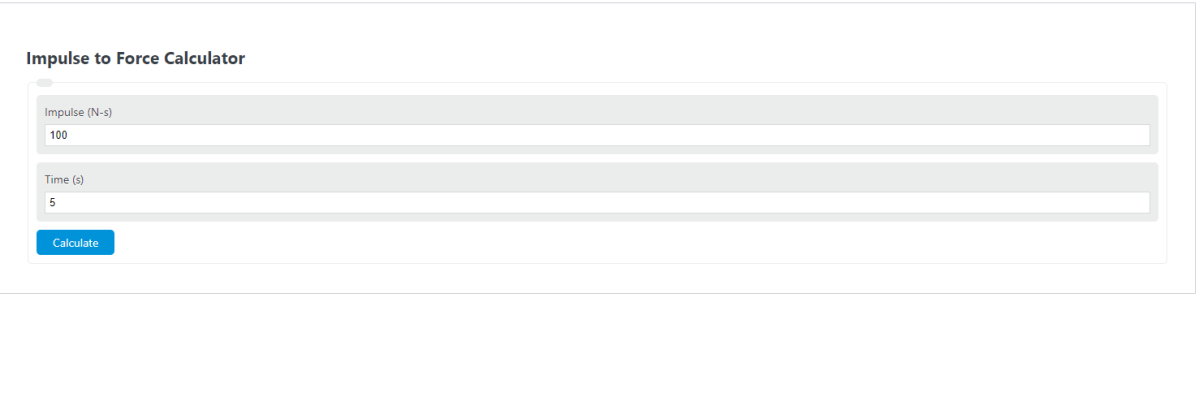Enter the total impulse and the total time into the calculator to convert the impulse to force.
- All Force Calculators
- Work to Force Calculator
- Velocity to Force Calculator
- Specific Impulse Calculator
Impulse to Force Formula
The following equation is used to calculate the force from impulse.
F = J/t
- Where F is the force (N)
- J is the impulse (N-s)
- t is the time (s)
To calculate force from impulse, simply divide the total impulse by the change in time.
Can impulse be converted to force?
Impulse is defined as force times time. Therefore, to convert an impulse to a force, the time must be known, then you divide the impulse by that time.
How to Calculate Force From Impulse?
Example Problem:
The following example outlines the steps and information needed to calculate the force from impulse.
First, determine the total impulse. In this example, the impulse is measured as 500 N-s.
Next, determine the total change in time. The change in time is measured to be 50 s.
Finally, calculate the force from impulse using the formula above:
F = J/t
F = 500/50
F = 10N
FAQ
What is impulse in physics?
Impulse in physics is a quantity that measures the effect of a force acting over a period of time. It is the product of the force (F) applied and the time (t) during which the force is applied. Impulse is given by the formula J = F*t and is measured in Newton-seconds (N-s).
Why is the concept of impulse important in calculating force?
The concept of impulse is important because it directly relates to the change in momentum of an object. By understanding the impulse applied to an object, one can determine the force exerted on the object over a specific time interval. This is crucial in various fields, including physics and engineering, for designing safety mechanisms, understanding collisions, and more.
Can impulse be negative, and what does that indicate?
Yes, impulse can be negative. A negative impulse indicates that the force applied is acting in the opposite direction to the motion of the object. This is often the case in scenarios where an object is slowing down or coming to a stop, such as a car braking to a halt. The negative impulse reflects the reduction in momentum of the object.
